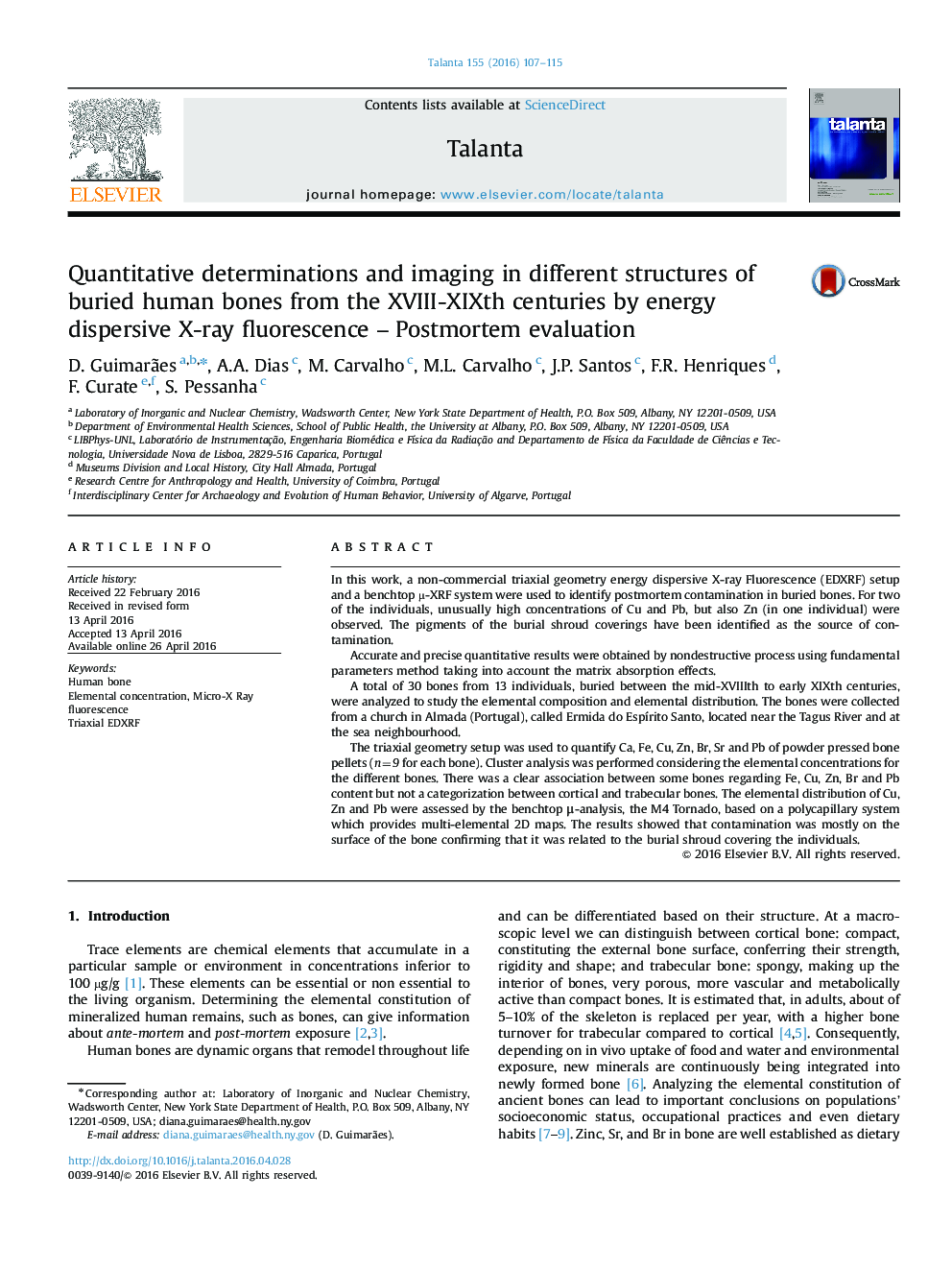| کد مقاله | کد نشریه | سال انتشار | مقاله انگلیسی | نسخه تمام متن |
|---|---|---|---|---|
| 1242420 | 1495780 | 2016 | 9 صفحه PDF | دانلود رایگان |

• X-ray fluorescence (XRF) is fit to study forensic biological/archaeological samples.
• Using tri-axial XRF and XRF imaging enables post/pre-mortem contamination assessment.
• Unusual bone Cu,Zn, and Pb levels were found due to contamination from burial shroud.
In this work, a non-commercial triaxial geometry energy dispersive X-ray Fluorescence (EDXRF) setup and a benchtop µ-XRF system were used to identify postmortem contamination in buried bones. For two of the individuals, unusually high concentrations of Cu and Pb, but also Zn (in one individual) were observed. The pigments of the burial shroud coverings have been identified as the source of contamination.Accurate and precise quantitative results were obtained by nondestructive process using fundamental parameters method taking into account the matrix absorption effects.A total of 30 bones from 13 individuals, buried between the mid-XVIIIth to early XIXth centuries, were analyzed to study the elemental composition and elemental distribution. The bones were collected from a church in Almada (Portugal), called Ermida do Espírito Santo, located near the Tagus River and at the sea neighbourhood.The triaxial geometry setup was used to quantify Ca, Fe, Cu, Zn, Br, Sr and Pb of powder pressed bone pellets (n=9 for each bone). Cluster analysis was performed considering the elemental concentrations for the different bones. There was a clear association between some bones regarding Fe, Cu, Zn, Br and Pb content but not a categorization between cortical and trabecular bones. The elemental distribution of Cu, Zn and Pb were assessed by the benchtop μ-analysis, the M4 Tornado, based on a polycapillary system which provides multi-elemental 2D maps. The results showed that contamination was mostly on the surface of the bone confirming that it was related to the burial shroud covering the individuals.
Figure optionsDownload as PowerPoint slide
Journal: Talanta - Volume 155, 1 August 2016, Pages 107–115